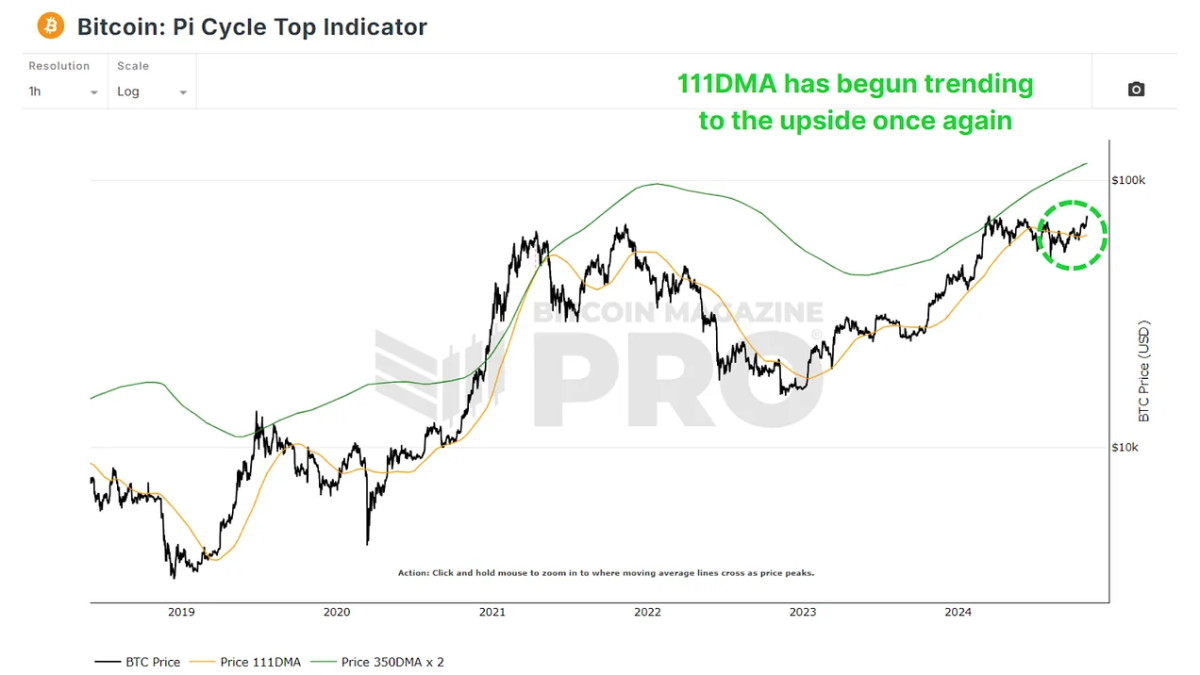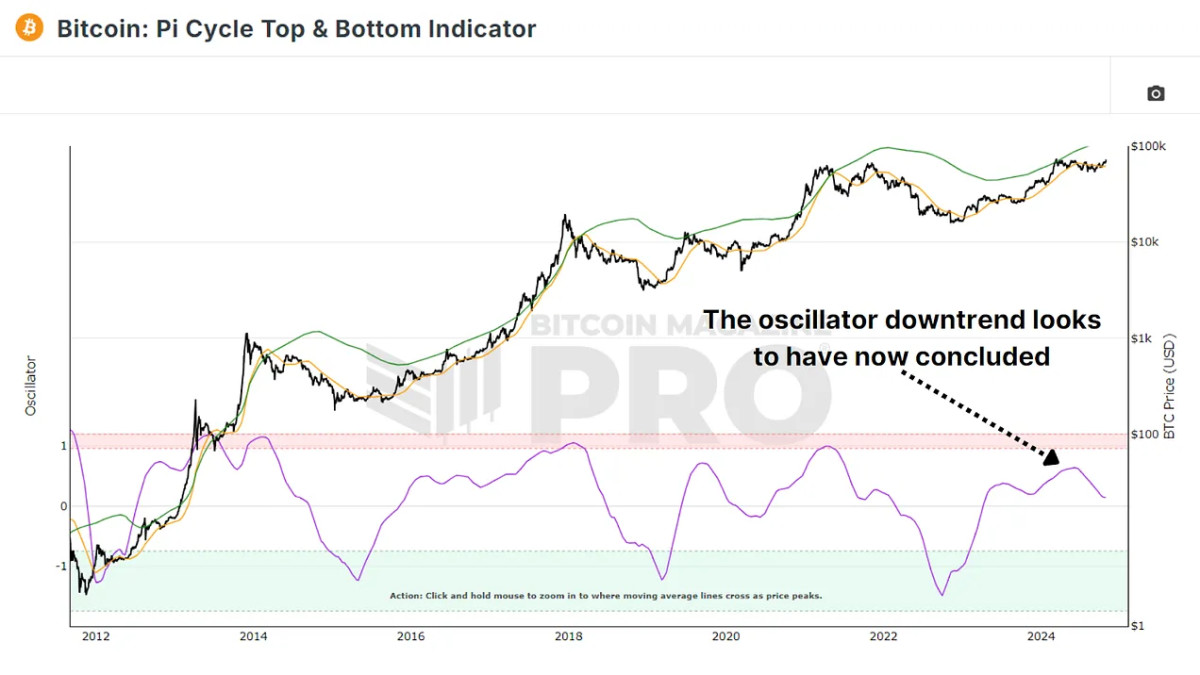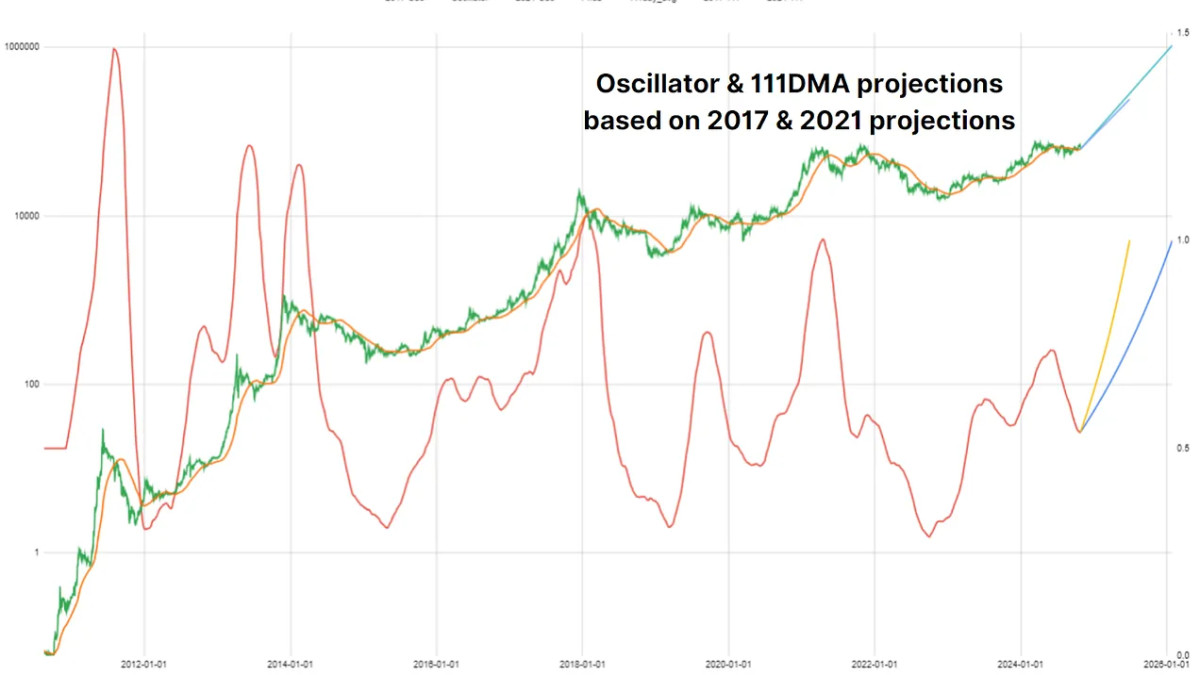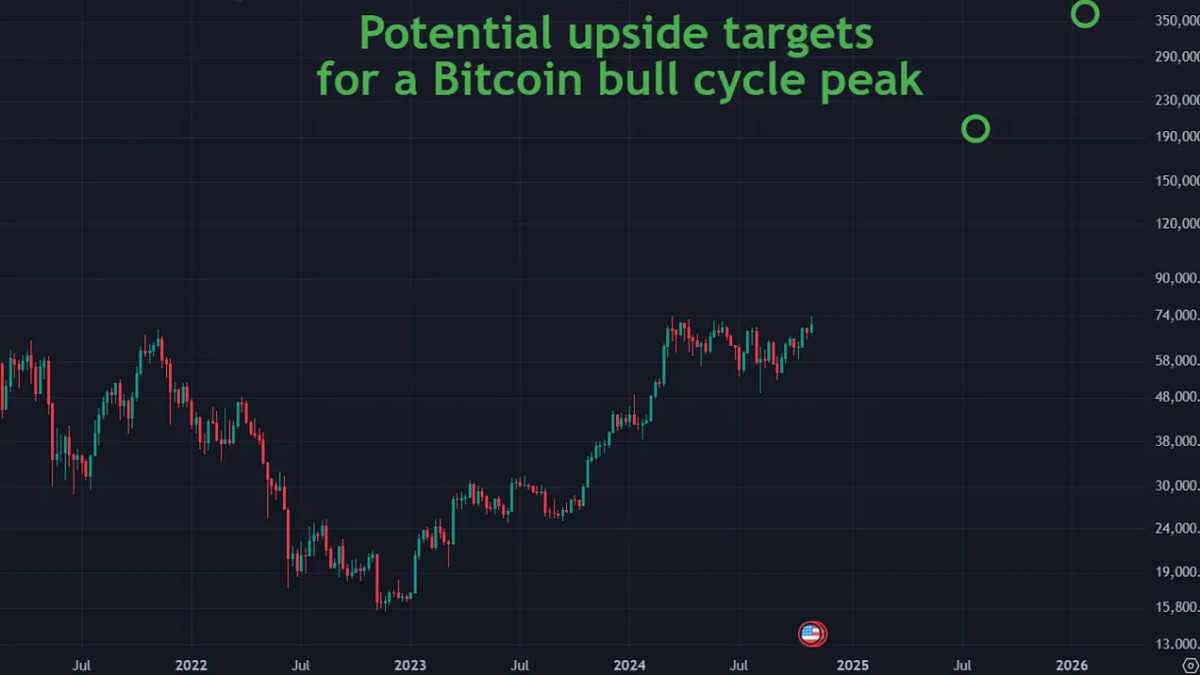With years of historical data, we can observe the patterns from past bull cycles and become increasingly better able to make predictions about our current cycle. In this analysis, we take a deep dive into when the next Bitcoin peak could occur and at what price level.
The Pi cycle
The Pi Cycle Top Indicator is one of our most popular tools for analyzing Bitcoin cycles. This indicator monitors the 111 and 350 day moving averages (multiplied by 2), and when these two lines cross, it is historically a reliable sign that Bitcoin is reaching a cycle peak, usually within just a few days. After these two levels drifted apart for several months due to the sideways price action, we are only now seeing the 111-day trend moving back up to close the gap.

We can measure the difference between the two averages to better define Bitcoin’s position within bull and bear cycles Pi cycle top and bottom indicator. This rising oscillator trend indicates that Bitcoin’s next bull run may be just around the corner, with parallels to previous cycles seen in 2016 and 2020.

Previous Bitcoin Cycles
Historically, Bitcoin bull cycles exhibit similar phases: an initial rapid growth, a cooldown, a second peak, and finally a significant retracement, followed by a new wave.
2016 Cycle: This cycle had a first peak, a dip, a second peak and then a full-blown bull market. It’s very similar to the trend we’re seeing right now. Bitcoin’s price reached new highs after these two retracements.
Cycle 2020-2021: The pattern was slightly less pronounced, but a similar trajectory was observed. Bitcoin’s price spiked twice: once during the initial surge and again at the height of the bull run when BTC reached an all-time high.
Using the Bitcoin Magazine Pro API we can simulate different growth scenarios based on previous cycles. Since the Pi Cycle Top and Bottom oscillator have recently rotated upward, we can overlay the rate of change in the oscillator from the previous cycles to see the possible route of this cycle.

If the 2021 cycle repeats, the 111 and 350 day moving averages could cross around June 29, 2025, signaling a potential Bitcoin peak. If the 2017 cycle is mirrored, the moving averages may not cross until January 28, 2026, indicating a later peak.
Price projections
Using this data we can also try to estimate potential price levels. Historically, Bitcoin’s price significantly exceeded moving averages at its peak. During the 2017 bull run, Bitcoin’s price was three times the value of these moving averages at its peak. However, as the market matures, we have seen diminishing returns in each cycle, meaning Bitcoin’s price may not rise as dramatically compared to moving averages as it has in the past.

If Bitcoin follows a pattern similar to the 2021 cycle, with an increase of about 40% above the moving averages, this would place Bitcoin’s peak at around $339,000. Assuming yields decline, Bitcoin’s price could only rise about 20% above moving averages. In this case, the peak price would be closer to $200,000 in mid-2025.
Likewise, if the extended 2017 cycle repeats with diminishing returns, Bitcoin could peak at $466,000 in early 2026, while a more moderate increase could result in a peak price of around $388,000. While Bitcoin is unlikely to reach a million dollars in this cycle, these more tempered projections could still represent significant gains.
Conclusion
While these projections use established data, they are not guarantees. Each cycle has its unique dynamics, influenced by economic conditions, investor sentiment and regulatory changes. Diminishing returns and possibly even longer cycles are likely, due to the maturation of the Bitcoin market.
As Bitcoin’s bull cycle continues to evolve, these predictive tools can provide increasingly accurate insights, especially as the data evolves. However, such analysis provides potential results that can help you manage your risk and prepare for any outcome.
For a more in-depth look at this topic, watch a recent YouTube video here: Mathematically predicting the next Bitcoin All Time High
